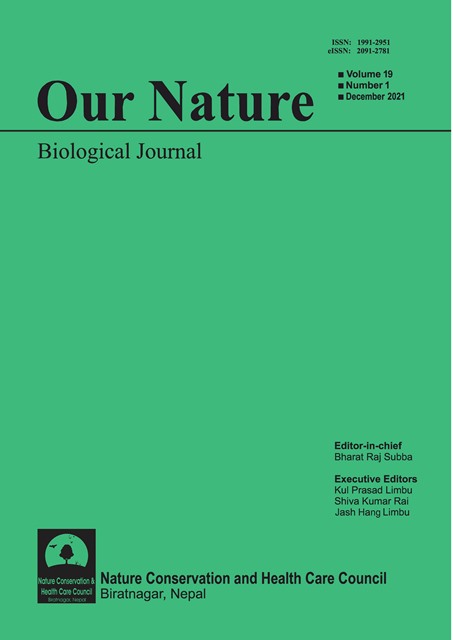Human-Elephant interactions and associated damage in the northern transboundary areas of Bangladesh
DOI:
https://doi.org/10.3126/on.v19i1.41213Keywords:
Non-resident elephant, human-elephant conflict, raiding, damage, economic assessmentAbstract
We have studied human-elephant interactions in the northern transboundary of Bangladesh and estimated the scale of associated damage due to the negative interaction by visiting conflict area, performing focus group discussions key informant interviews and using secondary data sources. Around 70-80 non-resident elephants regularly intruded to the study area through the international border fence using several trespassing points and engaged in conflicts with frontier villagers. We discussed the nature and scale of conflict and the financial losses due to the conflict. Besides severe casualties in both ends, the enumerated economic loss was USD 1,171, 665 in 2013 and 2014 due to the damage to cropland, houses and properties, trees and orchards. We have identified major human-elephant conflict (HEC) zones adjacent to the border fence through spatial analysis with different level of intensity. Appropriate human-elephant conflict mitigation measures such as habitat improvement and management, monitoring of elephant population, alternative income generation, awareness programs for the local people and working together with India regarding this issue is a timely and urgent need for Bangladesh
Downloads
Downloads
Published
How to Cite
Issue
Section
License
Copyright (c) 2021 Mohammad Shamsuddoha, M. Abdul Aziz

This work is licensed under a Creative Commons Attribution-NonCommercial 4.0 International License.
This license enables reusers to distribute, remix, adapt, and build upon the material in any medium or format for noncommercial purposes only, and only so long as attribution is given to the creator.




